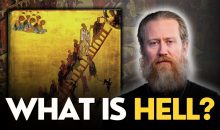Timeless Tradition: Understanding the Greek Orthodox Old Calendar – An introductory article about the history and significance of the Old Calendar.
The Greek Orthodox Old Calendar, also known as the Julian Calendar, is a traditional calendar used by some Eastern Orthodox churches, including the Greek Orthodox Church. The Old Calendar has a rich history and significance, and its use continues to be an important part of the spiritual and cultural heritage of the Greek Orthodox community.
History of the Old Calendar
The Old Calendar was introduced by Julius Caesar in 45 BCE, and it was the standard calendar used by the Roman Empire. The calendar was based on a solar year, with 365.25 days, and it included a leap year every four years. The Old Calendar was widely used throughout the Roman Empire, including in the Eastern provinces where Christianity was spreading.
In 1582, Pope Gregory XIII introduced the Gregorian Calendar, which is the calendar used by most of the world today. The Gregorian Calendar refined the calculation of the solar year, and it dropped 10 days from the month of October in that year. However, the Eastern Orthodox churches, including the Greek Orthodox Church, continued to use the Old Calendar, which had been in use for over 1,500 years.
Significance of the Old Calendar
The Old Calendar is significant for several reasons. Firstly, it is a connection to the early Christian tradition and the apostolic era. The Old Calendar was used by the early Christian communities, and it is still used today by some Eastern Orthodox churches. Secondly, the Old Calendar is an important part of the cultural and spiritual heritage of the Greek Orthodox community. It is used to calculate the dates of important feast days and holidays, such as Christmas and Easter.
The Old Calendar is also significant because it is a reminder of the importance of tradition and continuity in the Orthodox Church. The use of the Old Calendar is a way of maintaining a connection to the past and of preserving the traditions and practices of the early Christian communities.
Key Features of the Old Calendar
- Leap year rules: The Old Calendar has a leap year every four years, but it does not account for the extra fraction of a day that the Earth takes to orbit the sun. This means that the Old Calendar drifts away from the astronomical seasons over time.
- Month lengths: The Old Calendar has 12 months, with the months of January, March, May, July, August, October, and December having 31 days, and the months of April, June, September, and November having 30 days. The month of February has 28 days, except in leap years when it has 29 days.
- Start of the year: The Old Calendar starts on September 1, which is the beginning of the ecclesiastical year. This is in contrast to the Gregorian Calendar, which starts on January 1.
Conclusion
In conclusion, the Greek Orthodox Old Calendar is a timeless tradition that has been an important part of the spiritual and cultural heritage of the Greek Orthodox community for centuries. Its use continues to be a way of maintaining a connection to the past and of preserving the traditions and practices of the early Christian communities. While the Old Calendar may seem outdated to some, it remains an important part of the identity and tradition of the Greek Orthodox Church.
